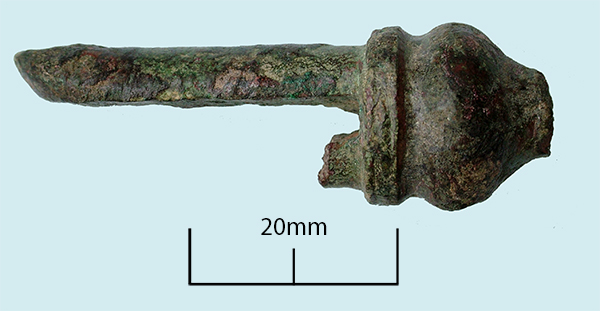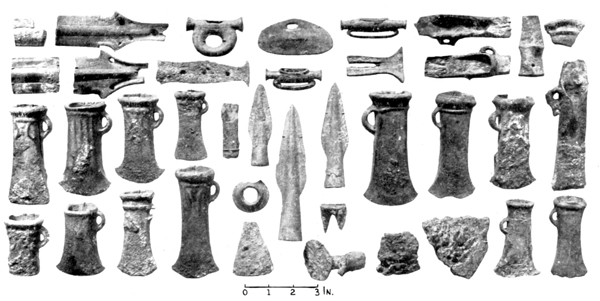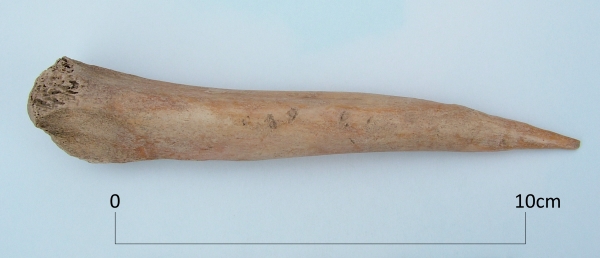 Today’s image for Day 279 of the VM_365 project is of a copper alloy object that was excavated during evaluations at Ebbsfleet, Thanet in 1990.
Today’s image for Day 279 of the VM_365 project is of a copper alloy object that was excavated during evaluations at Ebbsfleet, Thanet in 1990.
Made of copper alloy or bronze in a mould, the object has broken above the rounded tip and would originally have had two projections on the underside – one now broken. The surviving projection originally had a hole pierced through it, which would have been mirrored by the one on the other side. This hole has been filled by the remains of a bronze rivet which was used to fasten something between the two projections.
A similar object was excavated from grave 116 at the Anglo Saxon cemetery at Buckland, Dover. The Buckland object is more complete than our example and included a hanging loop at the top which connected to a bronze girdle hanger by a thick wire loop. Evison suggests that bronze rivets would have fastened the peg-like projections to a wooden shaft which could have been anything from a weaving implement to a holder for a hone stone.
Reference
Evison, V. I. 1987. Dover: Buckland Anglo Saxon Cemetery. HBMC Archaeological Report no. 3. pp 117, 242 & 320.

